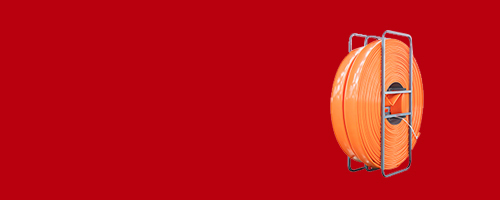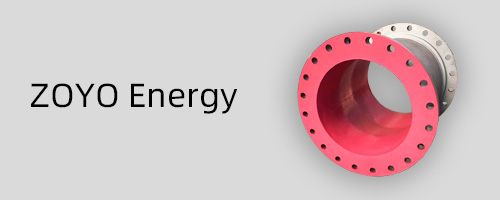
Is Your Industrial Fire Hose Ready for an Emergency?
2025-11-19 09:48
When a fire erupts in an industrial setting, the margin for error is zero. The thunderous blare of the alarm, the frantic rush of personnel, and the blinding smoke create a chaos where only the most reliable equipment and trained instincts can prevail. At the heart of this life-or-death response is a piece of equipment so fundamental that its readiness is non-negotiable: the industrial fire hose. It’s not just a tube for carrying water; it’s the critical lifeline between the inferno and the firefighters bravely standing against it. Yet, in the quiet normality of a non-emergency day, how often do we stop and ask the crucial question: Is our industrial fire hose truly ready for an emergency?
At ZYfire Hose Corporation, we've dedicated decades to understanding not just the engineering behind these hoses, but the real-world scenarios where they are deployed. Our experience, spanning from manufacturing facilities to oil rigs, has taught us one universal truth: preparedness is everything. This comprehensive guide, built on our extensive expertise, will walk you through the essential steps to ensure your fire hose isn’t just present, but is primed, reliable, and ready to perform when every second counts.
Understanding the Anatomy of an Industrial Fire Hose
Before you can assess readiness, you need to understand what you’re assessing. An industrial fire hose is a marvel of engineering, designed for immense pressure, harsh environments, and brutal abuse.
The Inner Tube: This is the core, typically made of synthetic rubber or PVC. Its job is to contain the water or firefighting foam without degrading. A compromised tube can lead to leaks, reduced pressure, and contamination.
The Reinforcement Layer: This is the muscle. Made from high-tension polyester, textile, or sometimes steel cord, this layer gives the hose its strength to withstand operating pressures that can exceed 1,000 PSI. Damage here can lead to catastrophic failure.
The Outer Cover: This is the shield. Constructed from rugged, weather-resistant, and often abrasion-resistant materials, it protects the reinforcement from the elements, chemicals, and physical damage like being dragged over rough concrete.
Our Expertise at ZYfire: We don't just assemble these components; we engineer them for synergy. Our ZYfire Ultra-HP hose, for instance, uses a proprietary thermoplastic inner liner fused with a spiraled high-tensile polyester reinforcement, creating a hose that is not only incredibly strong but also significantly lighter and more flexible than traditional models, making deployment faster and safer for your team.
The 5-Point Readiness Checklist: Is Your Hose Emergency-Ready?
Go to your fire hose cabinet or reel right now and run through this simple but critical checklist.
1. The Visual Inspection: Look Beyond the Surface.
A quick glance isn't enough. Conduct a systematic visual inspection monthly.
Cuts, Abrasions, and Blisters: Run your hand along the entire length of the hose. Feel for any soft spots, bubbles (which indicate separation of layers), or deep cuts in the outer cover. Even small abrasions can weaken the reinforcement over time.
Coupling Integrity: Check the couplings (the metal ends) for any signs of damage, corrosion, or looseness. Are the pins secure? Is there any "play" or wobble where the coupling attaches to the hose? A loose coupling can blow off under pressure.
Date of Manufacture: Like any product, fire hoses have a service life. Check the manufacturer's label for the date. While there's no universal expiration date, most standards recommend replacement after 10-20 years, depending on service and condition. ZYfire hoses are stamped with a clear, easy-to-read manufacture date and a unique serial number for traceability.
2. The Pressure Test: The Ultimate Proof.
A hose can look perfect but fail under pressure. An annual pressure test is not just a recommendation; it's a requirement in most safety codes (like NFPA 1962).
How it's Done: The hose is connected to a pressurized water source and subjected to its rated test pressure (e.g., 1.5 times its service pressure) for a sustained period. This test reveals hidden weaknesses in the reinforcement and couplings.
Why it's Vital: We've seen hoses that passed a visual inspection with flying colors but ruptured during a pressure test. This isn't a failure of the test; it's a success of your preventative maintenance program, catching a problem before it becomes a tragedy.
3. The Storage & Environment Check: Where It Lives Matters.
How and where your hose is stored directly impacts its lifespan and reliability.
Sunlight and Ozone: Prolonged exposure to direct UV rays and ozone (from electrical equipment) can cause the rubber and polymer materials to dry out, crack, and become brittle. Are your hoses stored in direct sunlight?
Temperature Extremes: Freezing temperatures can turn residual water inside a hose into ice, expanding and damaging the inner liner. Are your hoses in an unheated warehouse?
Chemical Exposure: Spills of oils, solvents, or corrosive chemicals can rapidly degrade the hose's outer cover and underlying layers.
Proper Coiling: Hoses should be coiled correctly, avoiding sharp bends that can kink and permanently damage the reinforcement. Our team at ZYfire often provides free on-site training for facility personnel on the correct way to coil and rack our hoses to maximize their service life.
4. The Accessibility & Deployment Drill: Can You Get to It Fast?
A perfectly maintained hose is useless if it's trapped behind a pile of pallets or takes five minutes to untangle.
Clear Access: Is the hose cabinet or reel completely unobstructed? Is the path from the hose to a potential fire zone clear?
Practice Deployment: Periodically, have your emergency team practice unrolling and connecting the hose. Is it kinked? Does it deploy smoothly? This drill tests both the equipment and your team's muscle memory.
5. The Documentation Review: Your Paper Trail of Safety.
Your records are your proof of due diligence.
Inspection Logs: Do you have a logbook documenting every visual inspection, who performed it, and what was found?
Pressure Test Certificates: Do you have certified records from the last hydrostatic test?
Maintenance History: Has the hose been repaired? When? By whom? Proper documentation is a core part of a safety culture and is often a focal point during insurance and regulatory audits.
Beyond the Checklist: Choosing the Right Hose for the Right Hazard
Readiness begins with selection. Using the wrong type of hose for your specific industrial hazard is a recipe for failure.
For Standard Water Supply: A general-purpose rubber or synthetic hose is often sufficient.
For High-Temperature Environments (e.g., metal foundries): You need a hose with a special heat-resistant outer cover, like our ZYfire Thermo-Shield line, which can withstand radiant heat without degrading.
For Chemical or Petrochemical Plants: You require a hose with a chemical-resistant inner tube and cover, designed to handle aggressive firefighting foams and resist splash from industrial chemicals.
For High-Abrasion Areas (e.g., mining, shipping): An ultra-abrasion-resistant cover is essential to prevent damage from being dragged across rough surfaces.
Our Authoritative Stance: The team at ZYfire Hose Corporation doesn't just sell you a product. Our technical specialists are available for consultation to perform a site-specific hazard analysis. We leverage our deep industry knowledge to recommend the exact hose type, length, and diameter for your unique operational risks, ensuring your first line of defense is also your smartest.
The Human Element: Training and Trust
The best hose in the world is ineffective without a trained operator. Your personnel must have trust in their equipment.
Familiarity Breeds Competence: Employees should be familiar with the basic operation of the hose—how to open the cabinet, how to unroll it, how to connect it to the standpipe, and the basic operation of a nozzle.
Feel the Power: During training, let them feel the kick of the hose as the water pressure surges. This practical experience is invaluable and builds the confidence needed to act decisively in a real emergency.
Building a Culture of Safety: At ZYfire, we believe our responsibility extends beyond the factory floor. We create easy-to-understand training materials, videos, and data sheets. We want your team to see their fire hose not as a static piece of compliance equipment, but as a dynamic, powerful tool they can wield with skill and confidence.
The ZYfire Difference: Engineering Trust into Every Fiber
So, why choose ZYfire Hose Corporation? It comes down to our foundational commitment to E-E-A-T: Experience, Expertise, Authoritativeness, and Trustworthiness.
Experience: For over 40 years, we have been on the front lines, supplying hoses to a global clientele across every major industry. We've seen the failures and engineered the solutions.
Expertise: Our R&D department is staffed with material scientists and engineers who are constantly innovating. We hold numerous patents for hose design and manufacturing processes, pushing the boundaries of what's possible in flow efficiency, weight reduction, and durability.
Authoritativeness: We don't just follow industry standards like NFPA; we actively participate in committees that help shape them. Our white papers and technical guides are cited by safety professionals worldwide.
Trustworthiness: Our manufacturing process is ISO 9001 certified, ensuring unparalleled quality control. Every hose that leaves our facility is a product of a rigorous system designed to eliminate defects. Our customer support is legendary—we stand by our products and our partners.
Conclusion: Don't Wait for the Alarm to Sound
Returning to our initial, vital question—"Is your industrial fire hose ready for an emergency?"—we hope you now have a clear, actionable roadmap to find the answer. Readiness is not a single event; it is a continuous cycle of inspection, testing, proper storage, and ongoing training.
The cost of complacency is unimaginable. The investment in a rigorous maintenance program and in high-quality, application-specific hoses from a trusted manufacturer like ZYfire Hose Corporation is not an expense; it is the ultimate insurance policy for your most valuable assets: your people, your property, and your peace of mind.
Don't gamble with readiness. Contact a ZYfire safety specialist today for a complimentary review of your fire hose needs. Let us help you ensure that when the moment of truth arrives, your lifeline is not just there, but is unequivocally, reliably ready.
Get the latest price? We'll respond as soon as possible(within 12 hours)









